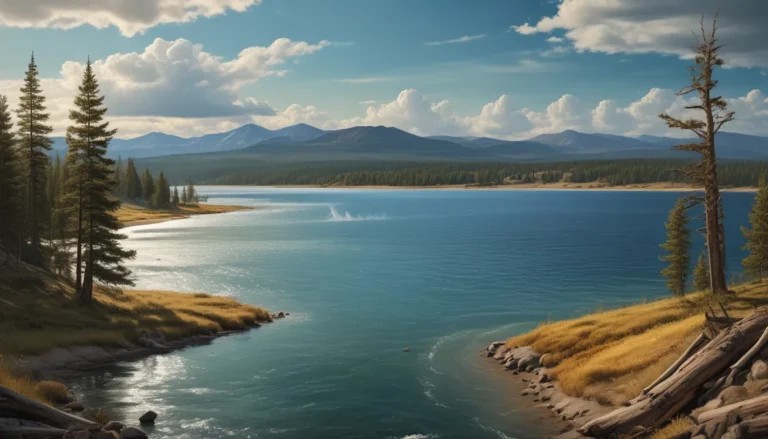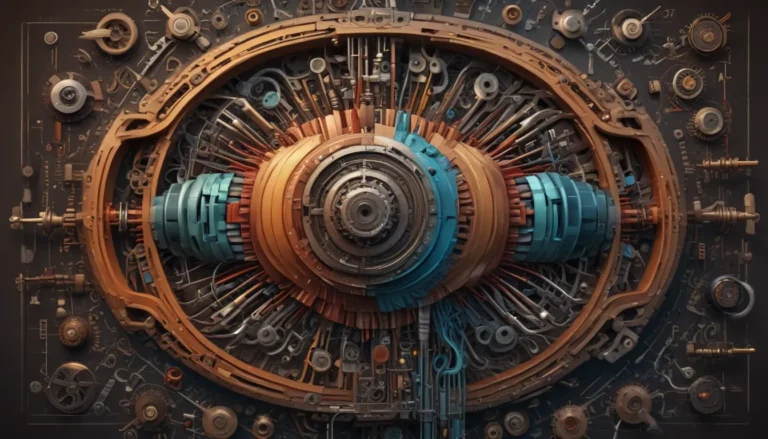The pictures we use in our articles might not show exactly what the words say. We choose these pictures to make you interested in reading more. The pictures work together with the words but don’t take their place. The words still tell you the important facts.
In the vast expanse of the Universe, few phenomena capture our imagination quite like star-forming regions. These cosmic nurseries are where new stars are born, shaping the fabric of the universe and offering glimpses into the origins of our existence as stardust beings. Join us on a journey as we explore the enchanting world of star-forming regions and uncover 14 captivating facts that will leave you in awe of the beauty and intricacy of the cosmos.
The Enchanting Birthplaces of Stars
Star-forming regions, also known as stellar nurseries, are cosmic cradles where the magic of star formation unfolds. Filled with gas, dust, and dynamic interactions, these regions are where the breathtaking spectacle of celestial birth takes place.
The Crucial Role of Magnetic Fields
Within star-forming regions, magnetic fields play a pivotal role in shaping the evolution of young stars. They influence the collapse of gas and dust, impacting the orientation and alignment of emerging stars.
Giant Molecular Clouds: The Heart of Star Formation
Giant molecular clouds are colossal collections of gas and dust that span hundreds of light-years. These immense clouds serve as the primary sites where star formation initiates, as the gravitational collapse of dense regions triggers the birth of new stars.
The Emergence of Protostars
Deep within the dense cores of star-forming regions, small pockets of gas and dust undergo gravitational collapse, giving rise to protostars. These protostars are in a crucial phase of formation, slowly accumulating mass as they draw material from their surroundings.
Herbig-Haro Objects: Spectacular Signs of Star Formation
Herbig-Haro objects are dazzling phenomena observed in star-forming regions. They form when powerful jets of gas expelled by young stars collide with the surrounding interstellar medium, creating shockwaves and luminous emissions that offer valuable insights into ongoing star formation activities.
How Massive Stars Shape Their Environment
Massive stars within star-forming regions wield a profound influence on their surroundings. Their intense radiation and stellar winds sculpt the gas and dust, creating intricate structures such as pillars and cavities.
Supernovae: The Cosmic Enrichers
As stars in star-forming regions evolve, they may end their lives in dramatic supernova explosions. These explosions release immense energy and expel heavy elements into the interstellar medium, enriching it with the building blocks necessary for the formation of future stars and planets.
The Birth of Star Clusters
Star-forming regions often give rise to stellar clusters, groups of stars that form from the same molecular cloud. These clusters vary in size from a few dozen to several thousand stars, offering a unique opportunity to study the collective properties and evolution of multiple stars simultaneously.
Protostellar Disks: Cradles of Planetary Systems
As protostars accrue mass, they develop protostellar disks composed of gas and dust. Within these disks, planets and other celestial bodies form through a process known as accretion. These protoplanetary disks serve as the birthplaces of planetary systems, including our own solar system.
Exploring Star-Forming Regions with Telescopes
Astronomers utilize a range of telescopes, including radio, infrared, and X-ray telescopes, to study star-forming regions. Each wavelength reveals different facets of these regions, allowing scientists to delve into the intricate processes involved in star formation.
The Significance of Feedback Mechanisms
Feedback mechanisms such as ionization, stellar winds, and supernova explosions within star-forming regions play a critical role in regulating star formation. These mechanisms can disrupt the collapse of gas and dust, either halting further star formation or triggering new episodes of stellar birth.
The Evolutionary Impact of Star-Forming Regions on Galaxies
Studying star-forming regions is essential for understanding the evolution of galaxies. By examining the properties and distribution of stars in different regions, astronomers can gain valuable insights into galaxy growth processes, the formation of diverse star types, and the overall structure of the universe.
The Promising Future of Star Formation Research
Ongoing research on star-forming regions holds the promise of uncovering additional mysteries surrounding the birth, life, and demise of stars. This knowledge will deepen our comprehension of the universe and potentially lead to groundbreaking discoveries in the future.
These mesmerizing facts about star-forming regions offer a glimpse into the awe-inspiring cosmic processes occurring within these celestial nurseries. By exploring the intricate mechanisms of star formation, we gain not only a better understanding of the universe but also insights into our own cosmic origins as stardust beings.
In Conclusion
In conclusion, star-forming regions stand as dynamic and captivating sectors within our universe. Through the magic of gravitational collapse and protostar formation, these regions give birth to the stars that illuminate our night skies. Characterized by stunning visuals and crucial roles in stellar evolution, these regions are testaments to the remarkable forces shaping and redefining the cosmos.
FAQs
-
What is a star-forming region?
A star-forming region is a segment of space where new stars are actively forming, typically characterized by the presence of gas and dust undergoing gravitational collapse. -
How are star-forming regions detected?
Star-forming regions can be detected through various observation techniques, including infrared and radio observations that penetrate the dense gas and dust clouds, allowing scientists to study nascent stars and their surroundings. -
How long does it take for a star-forming region to produce a star?
The timescale for star formation varies, but generally, it takes millions of years for a star-forming region to culminate in a fully-formed star through gradual contraction and fusion processes within the protostar. -
What are some famous star-forming regions?
Well-known star-forming regions include the Orion Nebula, the Carina Nebula, and the Eagle Nebula, captivating both astronomers and amateur stargazers with their stunning beauty. -
Are star-forming regions dangerous?
While not inherently dangerous, star-forming regions can contain high-energy phenomena like stellar winds, radiation, and occasional supernovae, requiring researchers to exercise caution when studying these regions.
Star-forming regions lead us on a celestial journey filled with wonder and discovery. From the birth of stars to the evolution of galaxies, these cosmic nurseries offer a window into the intricate workings of the universe. As we continue to explore and unravel the secrets of star formation, we embark on a quest to unveil the mysteries of the cosmos, one captivating fact at a time.






